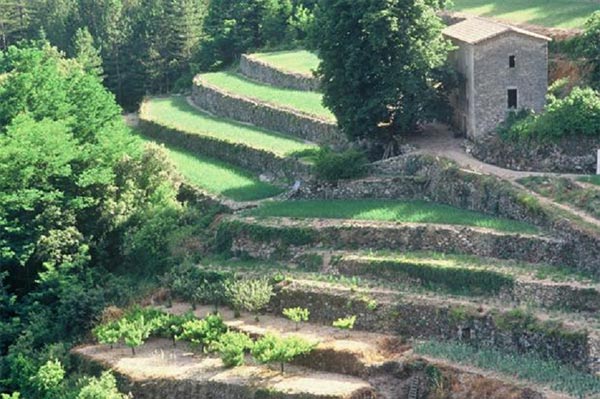The contours of the Cévennes
The Cévennes Mountains are like an enigmatic labyrinth of peaks dominated by Mont Aigoual (1,567 m).
Once a hideaway for Protestants and resistance fighters who needed shelter and secrecy, the Cévennes is a harsh and beautiful region that has long stood for freedom. The people of the Cévennes have built, shaped and tamed this landscape to grow grape vines, olive trees, chestnut trees and blackberry bushes with great mastery of the elements. Ancient drovers’ roads that were used for moving herds or flocks are now perfect trails for hikers who are able to discover the diversely rich heritage of the region. The locals refer to the chestnut tree as the ‘bread tree’ while the blackberry bush is called the ‘golden tree’ – they are relics of the silk industry that once prospered here. The countryside is dotted with castles, while the Salindrenque River winds tightly around the Liron Mountain and opens into the Gardons valley to the east.
Between the vines and the scrubland…
Very little separates the Causse limestone plateau from the Durfort Castle!
Though the scrubland landscape seems to stretch on forever, the limestone plateau is home to a host of treasures hidden under each stone. Each village stands out like a bright white stone on the trodden path of the hiker.
Geographical highlights of the Cévennes
The Cévennes are a chain of mountains belonging to the Massif Central. These mountains straddle two departments (the Lozère and the Gard), stretching to the south with the Vivarais hills in the Ardèche and the Haute-Loire, and including the Lacaune and Espinouse hills in the north, covering part of the Hérault department.
The Cévennes covets the south-west, south, south-east and east borders of the Massif Central. In the strict sense of the word – as defined by the famous explorer and cave diver Martel – the Cévennes region is essentially composed of schist and granite massifs; it covers the massif of Mont Lozère in the north and the massif of Mont Aigoual in the south-west.
In a broader sense, the Cévennes straddle a total of nine departments: Tarn, Aude, Hérault, Aveyron, Gard, Lozère, Ardèche, Rhône and Loire. In reality, however, they only really cover the departments of Lozère and Gard. Most of the Cévennes National Park is situated in the Lozère department. Mont Lozère is the highest mountain with the Finiels peak reaching 1,699 m. One of the most remarkable sites in the area is Mont Aigoual at 1,567 m on the crossroads between the Gard and Lozère departments. This chain of low-altitude mountains boasts a number of steep-sided valleys.
The Cévennes climate
The Cévennes climate can be described as Mediterranean which gradually becomes mountainous as the altitude rises.

 English
English
 Français
Français
